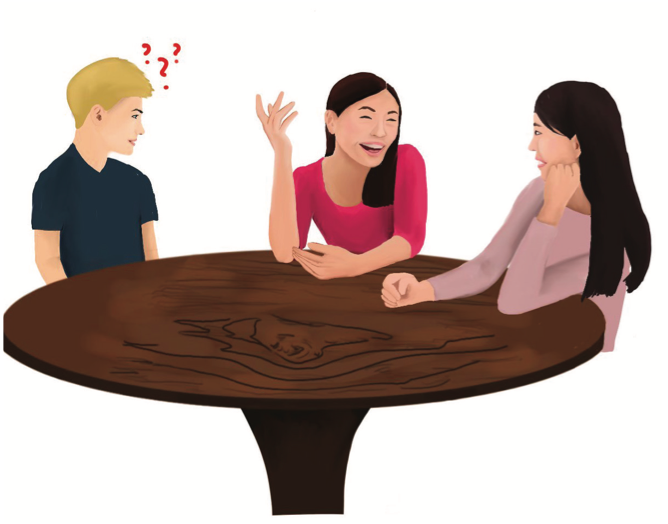
Walking down with my friends on Albany Road, I felt that I had truly settled in for the first time after arriving on campus. I believed I had finally found the people I wished to be around for the next four years of my Deerfield career. Yet my thoughts were cut short by a sudden outburst of another language, which took a few seconds for me to register as Chinese. Before I had realized, the entire conversation had switched from English to Chinese. Not understanding the topic at hand, I had no other choice but to stay silent. Seconds later, the group moved on as they turned their backs on me, engrossed in their own enigmatic conversation. In that moment, my dreams of truly fitting in were shattered.
Although situations like these may seem minor, the use of other languages in public settings is detrimental to promoting inclusion on campus. During my first month here, I have found that while Deerfield’s diverse community allows me to better understand and empathize with peers from different backgrounds and upbringings, it has also occasionally hindered connection with my peers.
As an international student myself, I know the aches and pains of homesickness too well. I long for delicious Korean food and Seoul’s familiar cityscape, but mainly, I miss the freedom to speak Korean freely with my friends. Finding my place in an environment an ocean away from home is hard enough, and being unable to speak my first language worsens the experience, making me feel like I am missing a part of myself.
I recognize that international students feel a strong instinct to use languages that we are more comfortable with, especially when we are surrounded by other students of the same nationality. However, using other languages can exclude people who do not know those languages — especially on a campus like ours where so many different nationalities connect only through English. This exclusion can be damaging regardless of intention and prevent relationships from developing further.
This language barrier problem is not limited to purely social settings. Even during sports practices, the use of other languages is far too common. During swim warm-ups, I noticed students who share a native language forming clique, separating themselves from the entire team. The same clique would remain together throughout practice, communicating only with each other. During team exercises, where communication is crucial, the use of other languages creates a rift. The language divide only serves to weaken the bonds between teammates.
Furthermore, as speakers of a common language tend to establish friend groups with each other, those who do not speak that language encounter difficulty when trying to join the group. This pattern exacerbates exclusion because these friend groups inadvertently exclude others from joining them. Thus, they are also cutting off alternative avenues for connection by discouraging peers who do not speak their language from reaching out again. We should approach conversations with empathy, keeping in mind the cultural diversity that exists at Deerfield.
Collectively, we should strive to create an environment on campus where everyone feels included, as promoting inclusivity within a diverse community is an important concern for all students. When participating in group conversations, let’s take a moment to look around and see what languages would allow everyone to participate.

